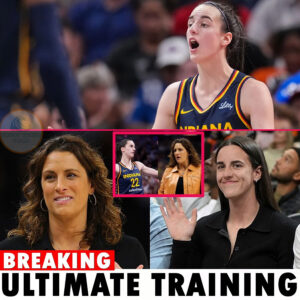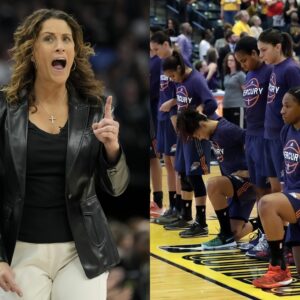When Caitlin Clark made her professional debut in the WNBA, the basketball world had no idea just how much she was about to change the landscape of women’s sports. The Iowa standout quickly became a sensation, not only with her on-court prowess but also through her off-court influence. A Rookie of the Year award, record-breaking performances, and an endorsement portfolio that dwarfs many seasoned veterans—Caitlin Clark is rewriting the rulebook for what it means to be a professional basketball player.
Clark’s rise to stardom was anything but slow. As a rookie with the Indiana Fever, she became the face of the league almost overnight. Fans flocked to arenas, social media buzzed, and TV ratings skyrocketed—by 300%, to be exact, for games featuring Clark. In her rookie season alone, she set 62 records, from scoring milestones to assists, leaving a trail of shattered expectations in her wake. But Clark didn’t stop there; her impact extended beyond the court. Clark’s presence led to an explosion in the WNBA’s economic activity, with her playing a major role in generating a staggering 26.5% of the league’s total economic activity.

Yet, while Clark’s on-court achievements are historic, her financial situation paints a picture of an athlete facing a unique, often unfair economic reality. Despite earning significant revenue for the WNBA, Caitlin Clark’s salary is less than a fraction of what she brings in. Her rookie salary was $76,500, a drop in the ocean compared to the $1.1 million she made in total earnings in 2024. The bulk of her income stems from endorsement deals, with Nike’s groundbreaking $28 million contract over 8 years as the crown jewel of her deals. This endorsement portfolio includes high-profile partners like Gatorade, State Farm, Wilson, and Panini.
In comparison, the average WNBA player’s salary is a fraction of Clark’s earnings, creating a widening gap between player compensation and the actual revenue athletes like her generate for the league. The WNBA operates under a strict salary cap with only 99.33% of league revenue allocated to player salaries. For context, NBA players receive a 50% share of league revenue. It’s a glaring imbalance that Caitlin Clark’s success is putting into stark focus. Her rise to prominence is forcing the league to reckon with this inequity, and the Players Association has already opted out of the current collective bargaining agreement, signaling that players are demanding a larger share of the revenue they help generate.
Clark’s influence extends far beyond just her earnings. She’s creating a seismic shift in how women’s basketball is viewed and valued, both on the court and off. Her endorsement deals, which account for the vast majority of her income, highlight a vital issue in women’s sports—the lack of recognition for the value female athletes bring to their respective leagues. Clark is the perfect example of this imbalance. Despite shattering records and bringing in millions in revenue, her salary is still capped at a modest figure compared to her male counterparts. It’s a sign that the system needs to change.

Caitlin Clark’s financial success is generating conversations not only about her own career but also about the future of women’s sports. If the WNBA wants to continue growing and attracting more fans, it may need to rethink its business model. And Clark’s success could be the catalyst for that change. She’s already suggested the idea of paying away-team players bonuses for the revenue generated by her games. Imagine a future where the WNBA adjusts its pay structure to reflect the star power of players like Clark. Not only would it ensure fairer compensation, but it could also encourage more women’s basketball stars to pursue professional careers, knowing that their worth will be recognized and rewarded.
While Caitlin Clark’s unprecedented rise has made her the face of women’s basketball, it’s also stirred some tension in the locker room. Veteran players, who have spent years building the league, have raised concerns about the attention and endorsement deals Clark is receiving. Some have even questioned whether she truly deserves all the hype. While such reactions may stem from jealousy or insecurity, they highlight a deeper issue within the WNBA—the growing divide between the league’s stars and the veteran players still struggling to make their mark. But Clark remains unfazed. Instead of engaging in drama or fueling the negativity, she’s focused on elevating her game and uplifting the league as a whole.
Clark’s handling of the situation reflects her maturity and professionalism. Rather than being dragged into petty rivalries or complaints, she’s focused on breaking barriers and continuing to inspire the next generation of women’s basketball players. As she leads the charge for more opportunities for women in sports, Caitlin Clark’s story is becoming a beacon of hope for all athletes seeking the recognition and compensation they deserve.
So, what’s next for Caitlin Clark? The WNBA finds itself at a crossroads. The league can either continue operating under its current model or embrace a new path, one where players are compensated fairly for their contributions. With Caitlin Clark leading the way, the future of women’s basketball has never looked more promising.
Relative Articles
None found





